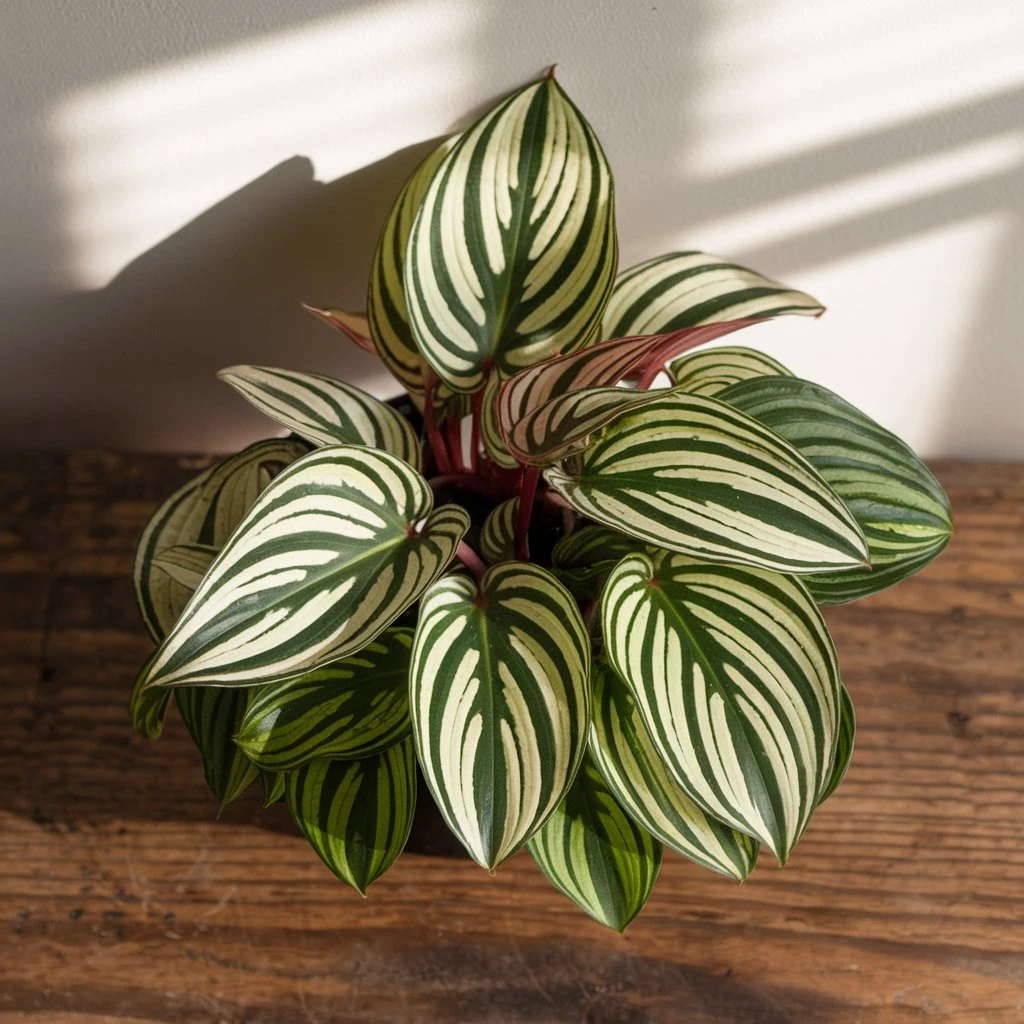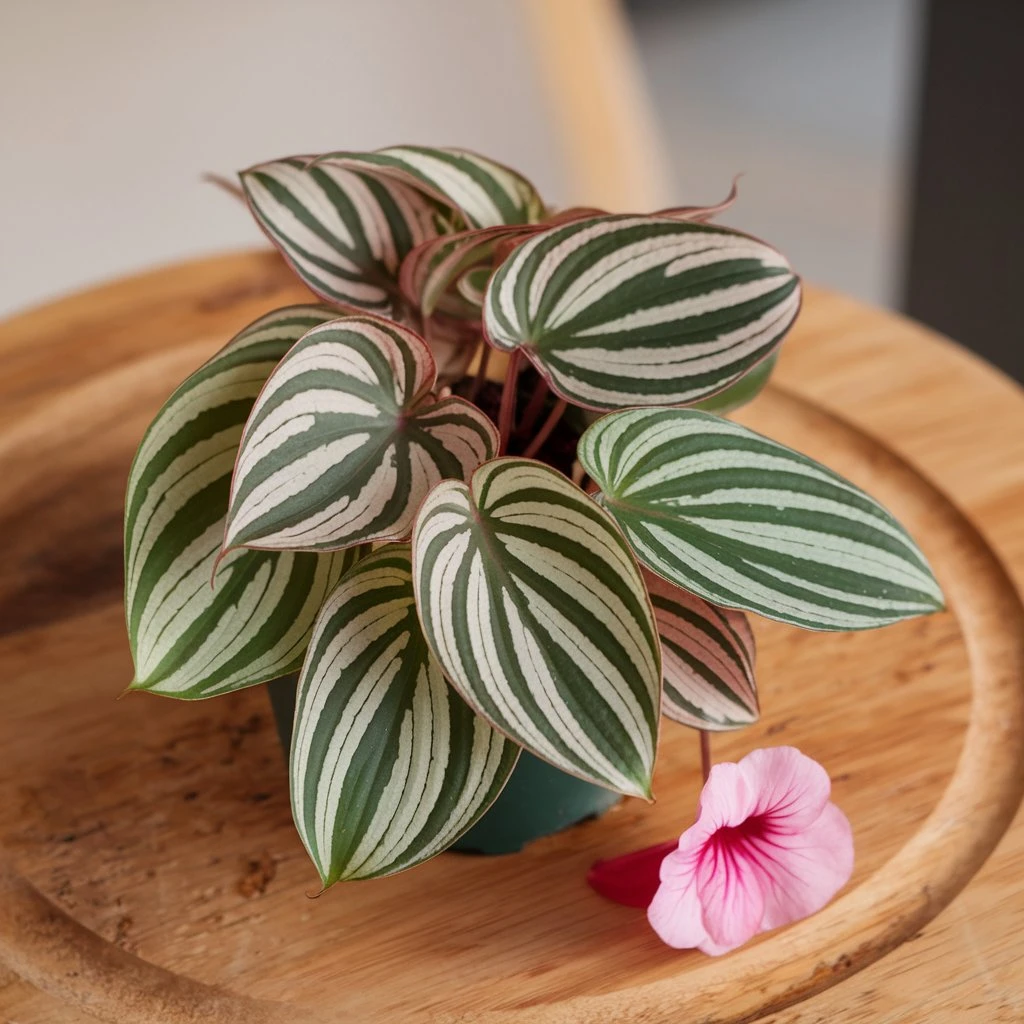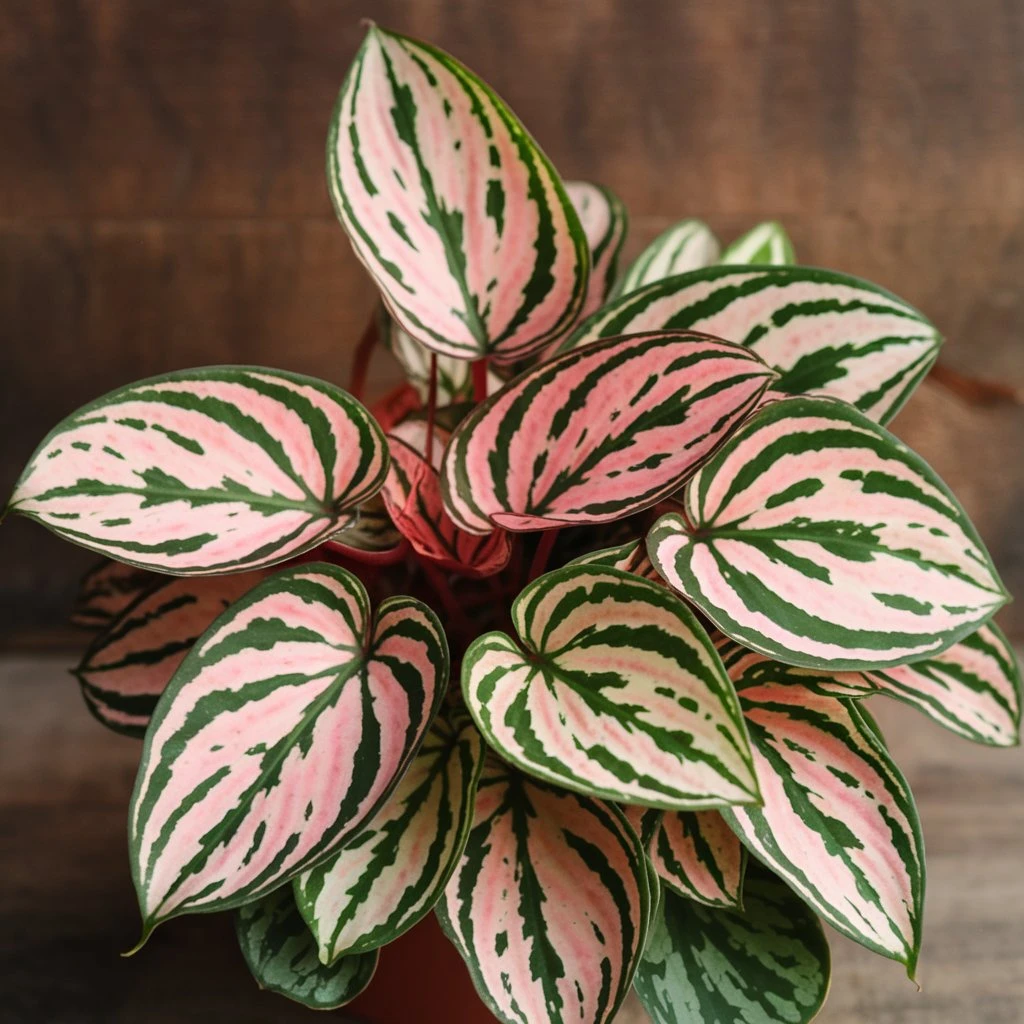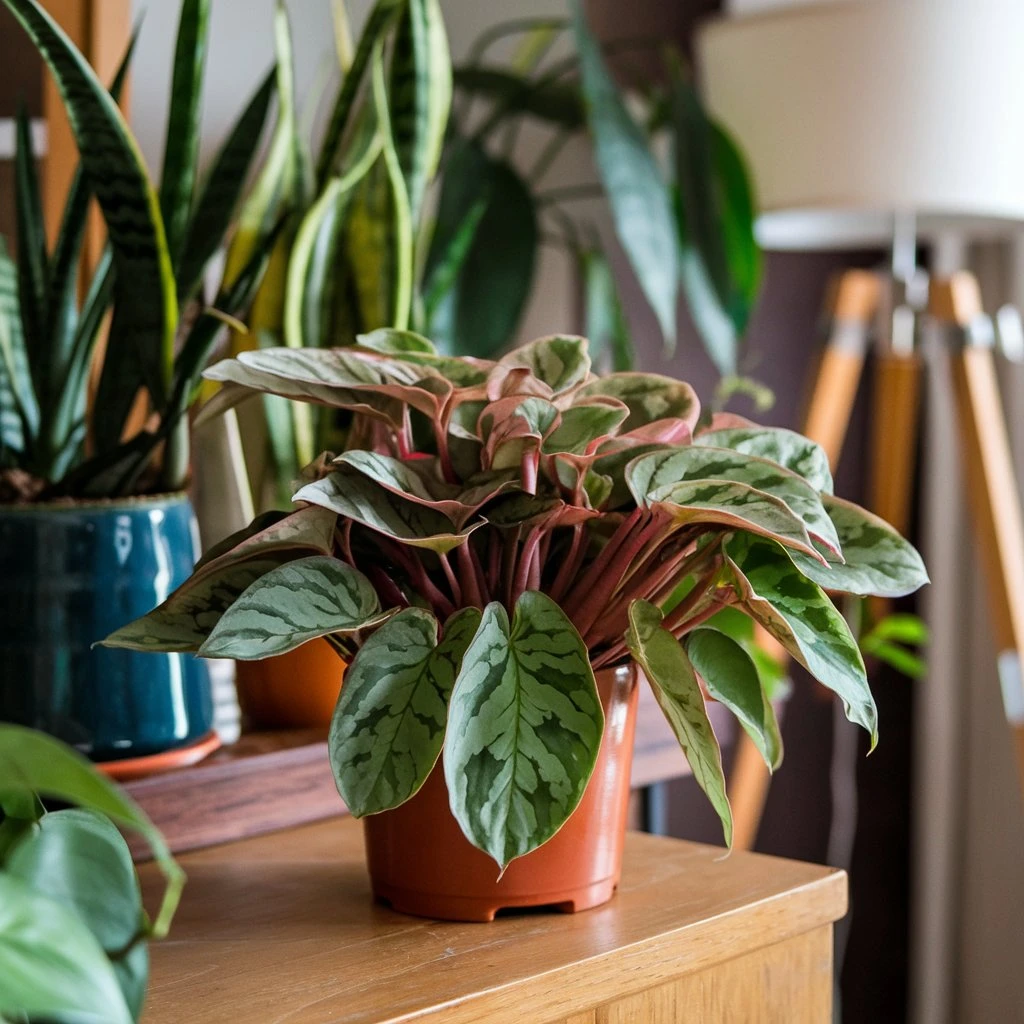
Introduction to Watermelon Peperomia Growth Patterns
The watermelon peperomia is a striking houseplant that has become a favorite among plant enthusiasts for its unique foliage and easy care. Its round, fleshy leaves, patterned with green stripes reminiscent of a watermelon rind, give it its signature look. However, understanding the growth patterns of the watermelon peperomia is essential to ensuring it thrives in your home.
In general, the growth rate of the watermelon peperomia can be described as moderate. It does not grow as quickly as some other houseplants, such as pothos or ivy, but with the right care, it can still provide steady and noticeable growth over time. Understanding its growth habits is crucial in providing it with the ideal environment to flourish.
A key factor that influences the growth rate of the watermelon peperomia is the amount of light it receives. While it tolerates lower light conditions, it will grow more vigorously with bright, indirect sunlight. Direct sunlight, on the other hand, can cause the leaves to scorch, stunting growth and damaging the plant. So, ensuring it is placed in a location that receives ample filtered light will encourage healthier growth.
The plant’s growth is also highly influenced by temperature. Watermelon peperomia thrives in warm conditions, ideally between 65°F and 75°F (18°C and 24°C). If temperatures dip too low, the plant may become stressed, resulting in slower growth or even leaf drop. In addition, the humidity level plays a significant role in its overall well-being. Higher humidity levels, ideally between 50% and 60%, promote better growth and help prevent common issues like leaf curling or browning.

Watering habits are another important factor. Like many succulents, the watermelon peperomia does not require frequent watering. Overwatering can lead to root rot, significantly impeding growth. A well-draining soil mix is essential to allow the roots to breathe and prevent water retention. It’s recommended to let the top 1-2 inches of soil dry out before watering again.
In conclusion, while the watermelon peperomia has a moderate growth rate, it rewards those who create the right growing conditions. With careful attention to its light, temperature, humidity, and watering needs, this plant will grow steadily and beautifully, providing a splash of greenery to any space.
Table of Contents
Key Factors that Influence Growth Speed
The growth speed of the watermelon peperomia is influenced by a combination of environmental factors, all of which play a vital role in determining how quickly this vibrant plant flourishes. By understanding these key elements, one can provide the optimal conditions for this striking houseplant to grow at its best.
One of the most significant factors is light. The watermelon peperomia thrives in bright, indirect sunlight. It does well in well-lit areas, but direct sunlight can scorch its delicate, patterned leaves. When placed in the right light conditions, this plant will reward you with a steady growth rate. Too little light, however, will result in a slower growth pace, with the plant becoming leggy and weak. Therefore, proper watermelon peperomia care includes selecting the right spot that mimics its natural environment—tropical, indirect light.
Temperature also plays a crucial role in growth. Watermelon peperomia prefers warm conditions, typically between 65°F and 75°F (18°C to 24°C). If the plant is exposed to cooler temperatures or sudden temperature fluctuations, its growth can slow considerably. Cold drafts or temperatures below 50°F (10°C) can stress the plant, causing it to halt growth or develop health issues. A consistent, moderate temperature ensures optimal health and more vigorous growth.
Humidity is another key factor for robust development. In its native tropical habitats, the watermelon peperomia thrives in a humid environment. High humidity levels, ideally between 50% and 60%, encourage better growth and prevent issues such as leaf curling or drying. In dryer environments, the plant may exhibit slower growth or show signs of stress. Regular misting or using a humidity tray can provide the extra moisture the plant craves, particularly during dry seasons or in air-conditioned spaces.

Watering habits are critical to the plant’s overall growth. Watermelon peperomia care involves careful attention to watering, as overwatering is one of the most common causes of stunted growth. The plant prefers to dry out slightly between waterings, and its thick, succulent leaves store moisture. To prevent root rot, allow the soil to dry out completely before watering again, ensuring the roots do not become waterlogged.
Finally, soil quality plays an essential part in growth speed. Well-draining soil is vital for the watermelon peperomia to thrive. A mix designed for tropical plants or succulents is ideal, as it allows the roots to breathe and prevents excess water from stagnating at the base of the plant. This helps to support healthy root systems, which in turn promotes faster and more sustainable growth.
In conclusion, by carefully managing light, temperature, humidity, watering, and soil, the growth speed of the watermelon peperomia can be significantly optimized. With these elements in harmony, this plant will continue to thrive and grow into a beautiful addition to any home.
How to Optimize Growing Conditions for Faster Growth
Optimizing the growing conditions for your watermelon peperomia is essential for encouraging fast and healthy growth. This tropical beauty thrives when its environmental needs are met, so understanding how to tailor these conditions is key to achieving a lush, vibrant plant.
First and foremost, watermelon peperomia care requires attention to light. While this plant loves brightness, it is sensitive to direct sunlight, which can scorch its striking, marbled leaves. To optimize growth, place your watermelon peperomia in a spot that receives indirect or filtered light. A north- or east-facing window with sheer curtains can be ideal, offering the right balance of brightness without the harsh rays. In lower light conditions, growth may slow down, and the plant could become leggy, so it is crucial to provide sufficient light for healthy development.
Temperature regulation is another vital factor. The watermelon peperomia flourishes in temperatures between 65°F and 75°F (18°C to 24°C). Placing it in areas with consistent, moderate temperatures will prevent it from experiencing stress. Avoid cold drafts or placing the plant near air conditioning or heating vents, as sudden temperature fluctuations can hinder growth. A stable, warm environment will keep the plant energized and promote steady growth.
Humidity is equally important in optimizing growth. Native to tropical regions, the watermelon peperomia thrives in higher humidity levels. Strive to keep humidity levels between 50 and 60%. This can be accomplished by regularly misting the plant or positioning it on a humidity tray. In dry climates, a humidifier or grouping plants together can also help create a more favorable environment for this plant.
Irrigation is essential for fostering robust growth. Overwatering is a common mistake with watermelon peperomia care and can lead to root rot, which significantly slows growth. Instead, allow the soil to dry out between waterings and water thoroughly, ensuring the water reaches the roots. Ensure the plant is in a well-draining pot and soil to avoid waterlogging.
Finally, the right soil mix supports the plant’s roots and helps encourage faster growth. Use a well-draining, light potting mix, such as one designed for tropical plants or succulents. This will help prevent the soil from becoming too compact and ensure that the roots have enough oxygen to grow strong and healthy.
By adjusting light, temperature, humidity, watering, and soil conditions, you can create an optimal environment that accelerates growth for your watermelon peperomia. When these factors are balanced, your plant will reward you with robust, fast-growing foliage and vibrant, marble-patterned leaves.
Common Growth Challenges and How to Overcome Them
Growing watermelon peperomia can be an incredibly rewarding experience, but like all plants, it comes with its fair share of challenges. Understanding and addressing these common issues ensures your plant thrives and continues to flourish.
One of the most frequent problems encountered when caring for watermelon peperomia is leaf yellowing. This often signals issues with watering practices. Overwatering is the most common culprit, as this plant is particularly sensitive to soggy roots. Excess moisture can lead to root rot, which hampers the plant’s ability to absorb nutrients, causing the leaves to turn yellow and eventually fall off. To avoid this, ensure you allow the soil to dry out between waterings. Opt for well-draining soil and a pot with drainage holes to prevent water from accumulating at the bottom, which is critical for proper watermelon peperomia care.

Another growth challenge is inadequate light. Watermelon peperomia thrives in bright, indirect light but will suffer if exposed to direct sunlight for prolonged periods. Sunburnt leaves can become crispy and discolored. To remedy this, relocate the plant to a spot with filtered or indirect light, such as a window with sheer curtains. In lower light conditions, the plant may become leggy, growing taller with fewer leaves. While this doesn’t harm the plant, it can make it appear less attractive. To prevent this, consider supplementing with artificial grow lights if natural light is insufficient.
Pest infestations can also become a major issue for watermelon peperomia. Common pests include spider mites, aphids, and mealybugs. These pests can cause damage by feeding on the leaves, leaving them distorted or covered with a sticky residue. Consistently monitor your plants for indications of these pests. If an infestation occurs, treat the plant with gentle insecticidal soap or neem oil, ensuring you cover all areas of the foliage and stems. This will help eliminate pests and keep the plant healthy.
Finally, another growth challenge is poor overall growth. If your watermelon peperomia seems to be stagnating, it may need a nutrient boost. Regular application of a balanced, water-soluble fertilizer can support robust growth. Be cautious, however, not to overfeed, as excessive nutrients can lead to salt buildup in the soil, which can stress the plant.
By addressing these common growth challenges and adjusting your watermelon peperomia care practices, you can ensure your plant stays vibrant, healthy, and beautiful year-round.
Conclusion: Can You Make Your Watermelon Peperomia Grow Faster?
In conclusion, achieving faster growth with your watermelon peperomia is certainly possible, but it requires a delicate balance of the right conditions and care. While this plant is naturally slow-growing, providing an environment where it can thrive can expedite the process. By focusing on key factors such as light, temperature, and soil quality, you can encourage your watermelon peperomia to reach its full potential more efficiently.
First and foremost, proper lighting plays a pivotal role in promoting healthy growth. Watermelon peperomia thrives in bright, indirect light, and ensuring it receives the right amount can make a significant difference in its growth rate. Too much direct sunlight can scorch its delicate leaves, while too little light will slow down its development. Maintaining an optimal lighting environment can encourage your plant to grow faster and more robustly.

Additionally, proper watering techniques are essential for promoting rapid growth. Watermelon peperomia is highly sensitive to overwatering, which can lead to root rot. To ensure its roots stay healthy and continue to grow, always allow the soil to dry out between waterings. Consistent, moderate watering coupled with well-draining soil creates the ideal conditions for accelerated growth.
Another factor that influences growth speed is the quality of the soil. A well-draining, nutrient-rich potting mix allows your watermelon peperomia to absorb the necessary nutrients, boosting its overall health and growth. Regularly fertilizing with a balanced, liquid fertilizer during the growing season can provide the added nutrients that will fuel your plant’s growth spurt.
While watermelon peperomia care can sometimes feel like a balancing act, the key to making your plant grow faster lies in consistently meeting its needs. Proper light, the right amount of water, and an optimal growing environment can promote faster and healthier growth. However, it’s important to remember that every plant has its own natural growth pace, and patience is just as important as care in cultivating a thriving watermelon peperomia.
By Mark


